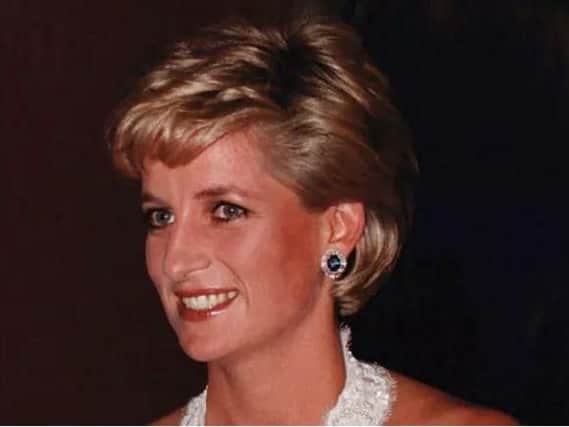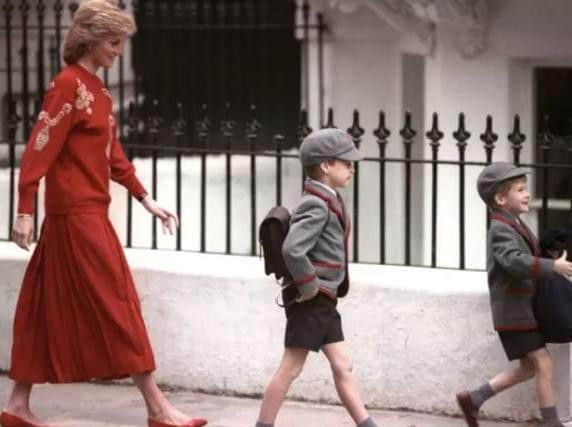Makers of new Diana documentary defend use of controversial tapes


It’s tempting to think there isn’t anything more to say about the life and death of Princess Diana.
However, with the 20th anniversary of her death in a Paris road accident at the age of 36 approaching, controversial video tapes are now set to be broadcast for the first time as part of a new TV documentary which will air on Channel 4 at 9pm tonight.
Advertisement
Hide AdAdvertisement
Hide AdPrince Charles in 1981 with his then fiance, Lady Diana Spencer, arriving at the Goldsmith's Hall in London for their first royal engagement together.


As her marriage to Prince Charles broke down, Diana spoke candidly about her heartache and the desperate measures she took to save the relationship to her voice coach, Peter Setellen and it is these which form the basis of the Channel 4’s Diana In Her Own Words which airs this Sunday.
With contributions from former confidantes, including private secretary Patrick Jephson, personal protection officer, Ken Wharfe, and ballet teacher, Anne Allan, the footage finds her between 1992 and 1993, shortly before her famous BBC Panorama interview.
“This is the definitive account of Diana’s life as she saw it,” says producer Charles Furneaux, “and it would be very hard for anyone to supersede it.
Advertisement
Hide AdAdvertisement
Hide AdWe hope it will be the resource that people come back to when revisiting the story of the Windsors.


It will give viewers an insight into the process she went through as an innocent and inexperienced young woman, suddenly launched into this strange world.”
Ralph Lee, the broadcaster’s head of factual, describes the tapes as a “treasure trove” of footage marking a period in royal history as significant as Edward VIII’s abdication.
Diana tells her trusted interviewer, who apparently reluctantly released the rights to the footage everything from the best time of her life living with girlfriends in Earl’s Court, to Charles’ courting technique which involved him “following me around like a puppy”.
Advertisement
Hide AdAdvertisement
Hide AdAfter marrying the heir to the throne at barely 20 years old, she tells of her realisation that her husband’s heart belonged to another woman, and how even the royal family’s “top lady” failed to offer much in the way of support.


Viewers will see how her isolation drove her towards an eating disorder and a deeply loving (but, she insists, non-sexual) relationship with her then protection officer, Barry Mannakee.
While the relationship between the Prince of Wales and Camilla Parker Bowles was public knowledge throughout his union with Diana, Jephson maintains that it was the key reason why some sought to demonise the young princess.
The former monarchist accuses Clarence House, Charles and Camilla’s London residence, of encouraging public enthusiasm for their relationship through a campaign painting Diana as 'inadequate, unsuitable and unworthy'.
Advertisement
Hide AdAdvertisement
Hide Ad“If there is popularity, it has been the result of a sustained and systematic campaign involving the finest PR people money can buy, he insists.


“But people eventually tend to see through spin, and Diana’s authenticity is one of the reasons that we are still talking about her 20 years after her death.”
As well as describing the 180-minute edit as a demonstration of Diana’s “backbone of steel,” Jephson says:
“What you get beautifully through those tapes is her sense of spontaneity and fun.
Advertisement
Hide AdAdvertisement
Hide AdShe was a fabulously inspirational boss, because even when things were tough there was never a day so tough that she couldn’t see the lighter side.”
Both former royal employees credit Diana with “changing the face of the British monarchy,” breaking its “theatre” to engage with hard-hitting issues of public life and, most importantly, passing that legacy onto her sons.
Jephson adds: “If Diana was still alive I reckon she would still be surprising people.
There was nothing spun about Diana, she was wonderfully unpredictable and her sense of anything being possible is an important element in the monarchy’s future viability.”